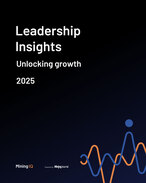This article is 4 years old. Images might not display.
Copper is one of the hottest words in commodities of late - and with good reason. With the world's largest copper mines dealing with declining grades, and a surging amount of copper demand to fuel the Green Revolution, copper supply is expected to be in increasing deficits for decades to come.
But that's not the country of Chile's fault, providing 28% of the world's coppers supply on an annual basis. Bordered by the Andes Mountains and the Pacific Ocean, Chile possesses 6 of the planet's largest copper deposits, and 8 of the largest copper miners operate in Chile.
But Chilean copper mines are not without concerns and supply is not endless. Grades are declining within all the major mines. Escondida, the largest copper mine of them all, produced 6% of global output in 2016. Escondida's copper grade in 2007 was 1.72%. It's remaining copper reserve grade is a mere 0.52%.
And, since all the low hanging fruit has been picked, there are few, if any, undiscovered copper outcroppings in Chile. The biggest concern is the declination of copper oxide projects. Heap leach mining of copper oxide is superior in many ways to copper sulphide flotation mining.
Environmentally, heap leaching is considerably cleaner. Initial capital and operating costs of a heap leach mine are multiple times less expensive than sulphide floatation. Today, 26% of the copper mined in Chile is from copper oxide mines.
By 2029, copper production from this source is expected to fall to 11.6%, despite it being more economic, greener for the environment and easier to mine and produce..
Not all is gloom and doom. World Copper Ltd.'s Escalones copper oxide resource projects a shining light. Only 35 Km from the world's largest underground copper deposit, El Teniente (owned by Codelco, the world's largest copper company), Escalones, World Copper's flagship asset, is the largest copper oxide project, in development, in Chile.
With over 3,400,000,000 pounds of copper currently in the resource, and significant expansion plans in the works, World Copper's development of Escalones will be interesting to watch in the coming years as power grids, electric vehicles, and frankly anything that needs to conduct electricity efficiently, look for new sources of Dr. Copper.
ABOUT THIS COMPANY
World Copper Ltd
World Copper Ltd is a copper-focused company with established oxide copper resources in Arizona, US, and Chile. Because the impact on the environment of oxide copper projects is substantially less than that of traditional sulphide flotation mining, World Copper believes its two oxide copper resources will have a friendly path to production. Zonia, in Arizona, has a Net Present Value of $447 million using $4 copper. Escalones is Chile's largest oxide copper project, in development. A Preliminary Economic Assessment will be available by early February.
HEAD OFFICE:
- 2710 – 200 Granville Street Vancouver, British Columbia Canada V6C 1S4
- Phone: +16046383665
- Web: worldcopperltd.com
- Email: blipp@worldcopperltd.com
SOCIAL MEDIA:
Phone: +1-561-573-8157
Email: blipp@worldcopperltd.com



























